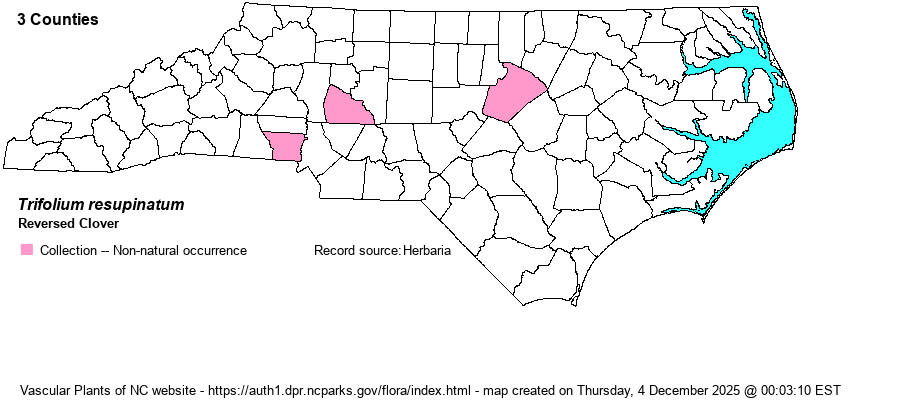| Author | L. | |
| Distribution | Taken in Gaston, Rowan, and Wake counties. Specimens from Orange County were grown at the old Soil Conservation Service nursery and Mason Farm.
Native of the Mediterranean region; in N.A. Que. to ND, south to FL and TX; Pacific states. | |
| Abundance | Very rare. Possibly no longer extant. | |
| Habitat | Farm, campus. | |
| Phenology | Flowering and fruiting February-September. | |
| Identification | Reversed Clover is usually multi-stemmed and also multi-branched (unusual among our clovers). The leaflets are oblanceolate. Flowering heads are rather hemispherical in flower, but mostly globose in fruit. The petals are rosy to purplish. In fruit the calyx becomes inflated and forms a sac. | |
| Taxonomic Comments | Trifolium is a large genus of some 240-250 species globally, mostly north-temperate zone. Most are readily recognized as a clover by their 3 broad leaflets and globular to hemispherical head of densely-packed flowers. Flowers vary from white to pink, and red; the hop clovers have tiny yellow flowers. Some species were introduced for their forage value for livestock, others hitched a ride with hay, packing material, etc. Our two native species -- T. carolinianum and T. reflexum -- have suffered great loss of habitat and are now rare. | |
| Other Common Name(s) | Persian Clover | |
| State Rank | SE | |
| Global Rank | GNR | |
| State Status | | |
| US Status | | |
| USACE-agcp | FACU link |
| USACE-emp | UPL link |

